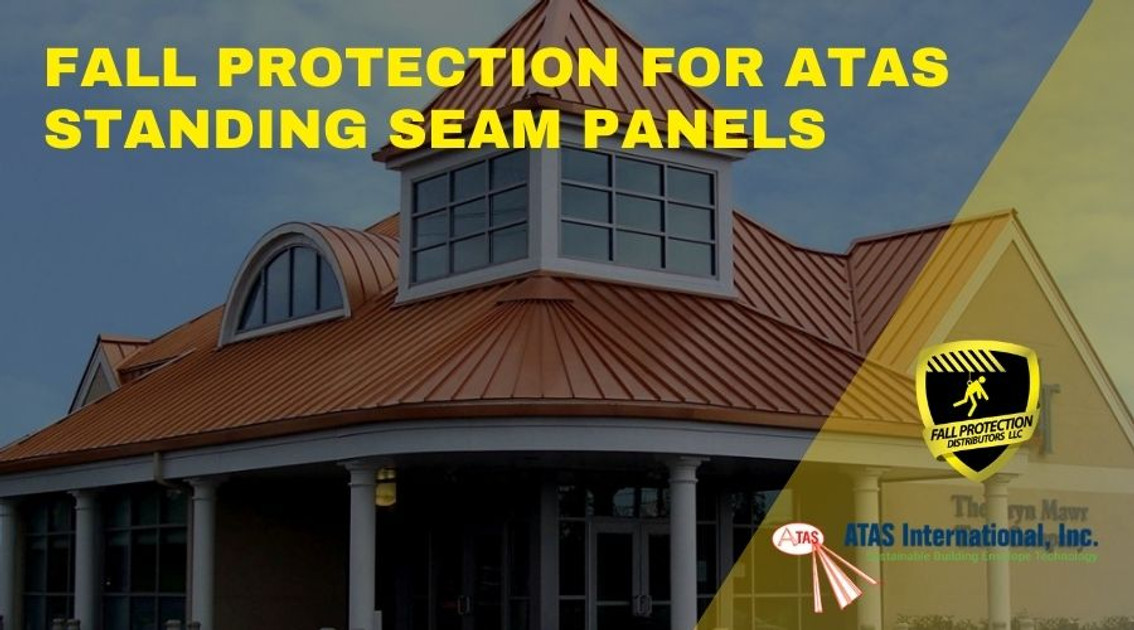Fall Protection for ATAS Standing Seam Metal Panels
Posted by Howie Scarboro - CEO Fall Protection Distributors, LLC on Apr 16th 2024

History Of ATAS International, Inc
ATAS International, Inc. started in 1963 and grew from a simple siding and trim installation business in Rochester, NY. ATAS has since expanded to multiple manufacturing facilities in New Jersey, Arizona, Illinois, and Pennsylvania. The Bus family remains at the top of the executive team, guiding ATAS International forward as it remains a family-owned business. ATAS has a reputation for premium-quality metal panels and versatile applications. One of the most successful product lines in the ATAS lineup is the standing seam metal roof panels.
Care must be taken with all standing seam systems when selecting specialized safety equipment to mount on these unique roofing systems. Contractors must carefully identify and use compatible fall protection devices to avoid damaging the roof system's watertight seams. This article explores the various ATAS standing seam profiles and specifications and will recommend the most compatible fall protection solutions for each panel.
Dutch Seam
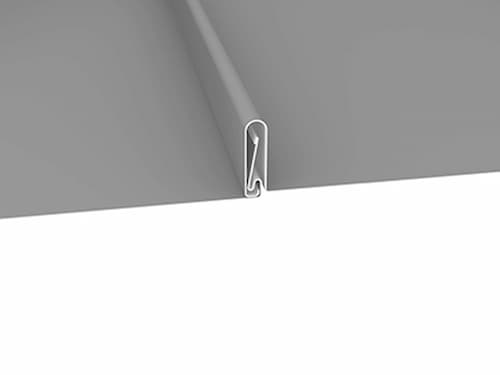
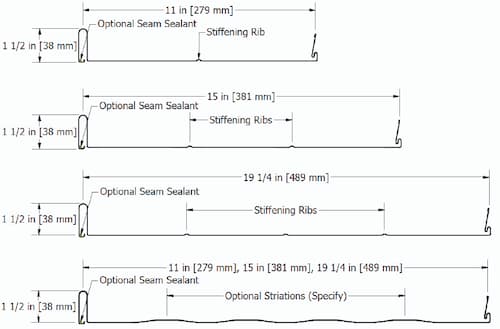
The Dutch Seam® is an innovative 1.5" tall snaplock standing seam metal roof panel. This seam style saves time and money on installation costs while ensuring a weathertight roofing system. Dutch Seam panels are structural and can be installed directly over purlins or solid substrates. With a minimum slope of 2/12, the Dutch Seam is an excellent choice for lower-sloped roofs.
Dutch Seam panels are available in several substrates, such as 22/24ga steel, aluminum, copper, and zinc and in panel widths from 11" to 19-1/4". The Dutch Seam® panel system is known for its versatility in residential and commercial projects.
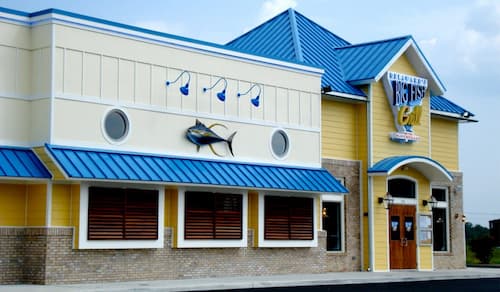
Compatible Fall Protection For Dutch Seam Roof Systems
The Dutch Seam requires the use of non-penetrating fall protection devices. Let's look at several methods to provide tie-offs on this type of panel. The best options are seam anchors or hooking over the ridge of steeper roofs to create anchor points.
Let's start with the seam anchor approach on steel panels. The SSRA system is only designed for 22/24 gauge steel panels and is incompatible with other panel substrates. The Standing Seam Roof Anchor SSRA1 uses 12 set screws to lock onto the seam with zero penetrations. The user can expand the functionality of the SSRA1 by adding the SSRA2 Roof Jack Adapter whenever walkboards are needed. A pair of these will support a worker on a 10' walkboard during roof work. Another option is to add the SSRA3 Anchor plate adapter on top of two SSRA1 Seam Anchors.
This assembly will provide the end anchor necessary to support up to a 100' horizontal lifeline for two workers.
Some alternative options for the Dutch Seam systems that are not 22/24 gauge steel are available. From 7/12 to 12/12 pitch, the Ridge Pro Steep Assist Anchor works by hooking over the roof's peak to create a simple and portable anchor that allows the worker to stay tied off while on the roof until returning safely to the ladder.
Consider using a ridge cap strap anchor for other non-steel roof systems with 1/12 up to 6/12 pitch. There are numerous versions of different lengths, but the Super Anchor 2815 Retrofit anchor is a popular choice. This anchor mounts under vented and non-vented ridge caps, and the small d-rings are the only anchor parts exposed after the installation.
FieldLok 1”, 1.5”, 2” 2-3/8”
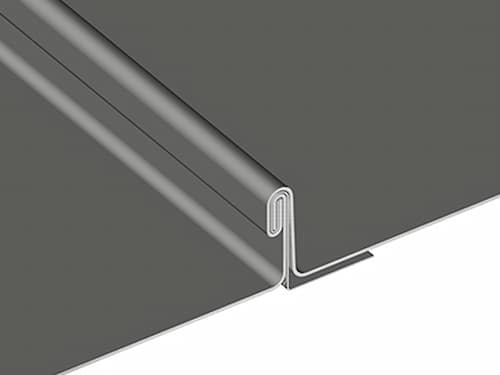
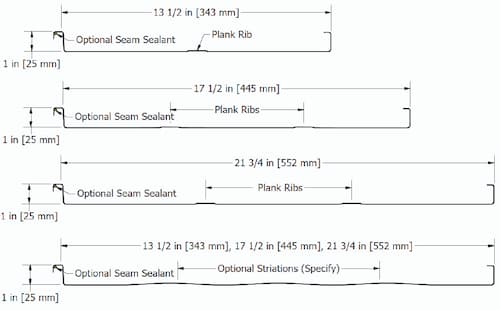
1” Field-Lok
The Field-Lok Series of panels are versatile and adaptive to various roofing needs. These mechanically seamed systems are available in multiple substrates, widths, and seam heights. The 1" Field-Lok has a 1" high seam and is a non-structural panel with single or double lock options.
The Field-Lok 1" can be flat or curved, with or without plank ribs. Substrates available are 22— and 24-gauge steel, aluminum, copper, zinc, and aluminum. Widths vary between 13-1/2" and 21-3/4" and require a 2/12 minimum slope.
1.5" Field-Lok
The 1½" Field-Lok™ panel is a non-structural single-locked or double-locked roof panel. The available substrates include 22/24 gauge steel, aluminum, zinc, copper, and stainless steel.
Panel widths range from 12-1/2" up to 20-3/4", and this panel requires a minimum slope of 2/12.
2" Field-Lok
The 2″ Field-Lok™ series is a single or double lock panel that meets severe load requirements. The single lock is considered structural. With a 2" seam height, the panel widths range from 15-1/4" to 19-1/2" and only require a minimum slope of 1/2"/12. Aluminum, zinc, 22 and 24-gauge steel, copper, and stainless are the available substrates for this panel series.
2-3/8” Field-Lok
The 2⅜" Field-Lok has a high-performance Triple-Lok design for outstanding wind uplift resistance. This structural panel is available in widths from 13-3/4" up to 18".
The available substrates for the 2-3/8" Field-Lok panel include aluminum, 22 and 24-gauge steel, and zinc.
The series of the Field-Lok only requires a minimum roof slope of ½"/12.
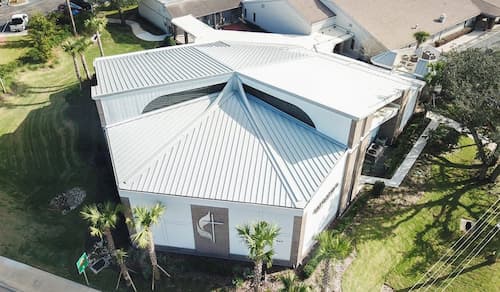
Compatible Fall Protection For Field-Lok Systems
All 22-gauge and 24-gauge steel Field-Lok panel systems are compatible with the Standing Seam Roof Anchor SSRA1 seam anchors. For expanded functionality, the user can add the SSRA2 Adjustable Roof Jacks for walk boards and the SSRA3 Anchor Plates.
For non-steel Field-Lok panels with 7/12 up to 12/12 pitch, the Ridge Pro Steep Assist device is the best alternative. It locks over the roof ridge to provide a solid temporary anchor point. For roof pitches less than 7/12, we recommend a peak anchor that mounts under vented or non-vented ridge caps. The Super Anchor 2815 is a best seller for this type of permanent anchor point.
Colonial Seam
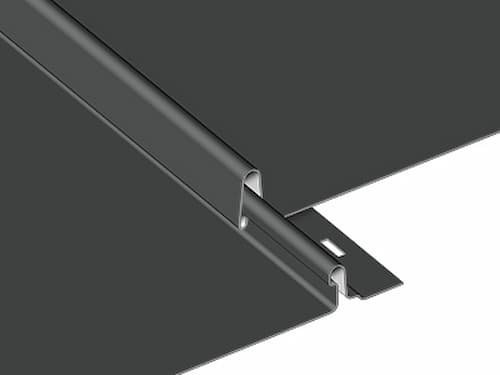
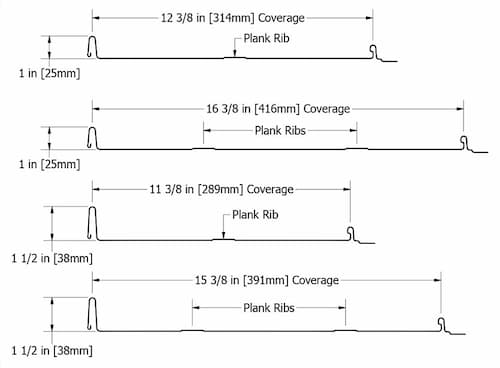
The Colonial Seam® snaplock panel features a nail strip flange for mechanically fastening the panels directly to the substrate. The seam heights can be 1" or 1.5" with aluminum or 24-gauge steel substrate options.
ATAS recommends panel widths from 11-3/8" to 16-3/8" and a minimum slope of 3/12. This panel design allows for mechanical fastening to the decking without clips while maintaining the clean look of standing seam roof systems.
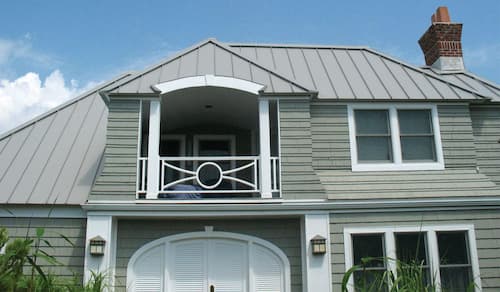
Compatible Fall Protection For Colonial Seam Metal Roofs
The Standing Seam Roof Anchor SSRA1 seam anchors are compatible with all 24 gauge steel Colonial Seam panel systems. This anchor system serves as a single-man tie-off, providing reliable safety for the roof. The SSRA2 Adjustable Roof Jacks for walk boards and the SSRA3 Anchor Plates for horizontal lifelines provide users with expanded functionality.
If you are working with non-steel Colonial Seam panels with a pitch ranging from 7/12 up to 12/12, the Ridge Pro Steep Assist device is the best alternative. It locks over the roof ridge for a reliable temporary anchor point. For roof pitches less than 7/12, we recommend a permanent peak anchor that mounts under vented or non-vented ridge caps. The Super Anchor 2815 is a best seller for this type of device.
PC System
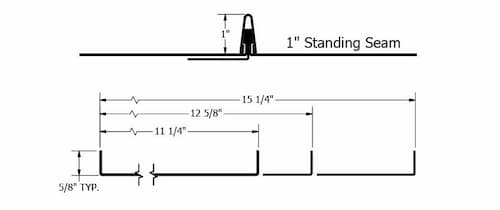
The PC™ System is a non-structural, batten strip style standing seam. PC™ System panels are perfect for flat, tapered, and curved installations.
The panels are available in the following substrates: aluminum, 22/24 gauge steel, copper, and zinc. They require a minimum of 3/12 slope for proper drainage. Panel widths range from 11-1/4" to 15-1/4", with a standard 1" seam height.
Compatible Fall Protection For PC System Roofs
If you are working with PC System panels made of 22 or 24-gauge steel, please note that the SSRA1 seam anchors are incompatible with batten strip panels like the PC System. We recommend using the Ridge Pro Steep Assist device as a temporary anchor point. Alternatively, for pitches less than 7/12, we suggest using a permanent peak anchor that mounts under vented or non-vented ridge caps, such as the Super Anchor 2815. These devices provide the necessary safety on the roof while working with PC System panels.
How To Keep Workers Safe On ATAS Standing Seam Metal Roofs
ATAS standing seam panels require specialized fall protection devices and techniques. For Dutch Seas, non-penetrating devices like the SSRA1 Seam Anchor provide reliable tie-off points. At the same time, alternative options like the Ridge Pro Steep Assist Anchor are perfect for non-steel panels with different pitches.
The Field-Lok series, including the 1", 1.5 ", 2", and 2-3/8" variants, can benefit from the SSRA1 Seam Anchor for steel panels. Ridge Pro Steep Assist and peak anchors are suggested for non-steel panels based on the roof pitch.
The SSRA1 Seam Anchor is a reliable tie-off point for 24-gauge Colonial Seam steel panels, with alternative solutions for non-steel panels based on pitch. Lastly, for the PC System, non-penetrating options like the Ridge Pro Steep Assist Anchor or permanent peak anchors are recommended for safety on the roof.
Each panel system is unique, and compatible anchoring devices should be carefully chosen. To discuss your project requirements, call us at 863-703-4522 or visit www.StandingSeamRoofAnchor.com. Our free 48-page manual teaches more about fall protection.

